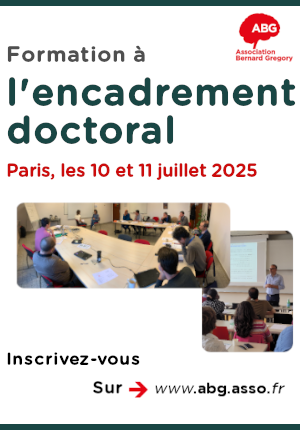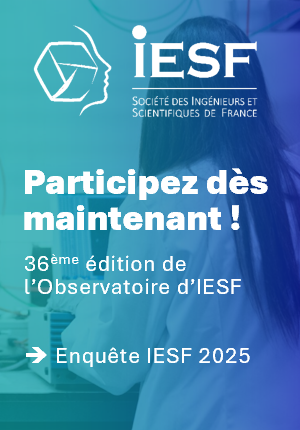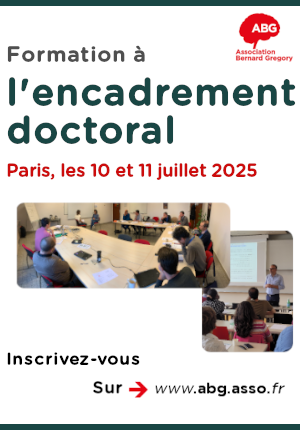Recherche et développement de matériaux d'électrode à air pour pile à combustible ou électrolyseur céramique à conduction protonique // Research and development of air electrode materials for fuel cells or proton-conduction ceramic electrolysers
|
ABG-131436
ADUM-65504 |
Thesis topic | |
| 2025-04-25 |
Centrale Lille Institut
VILLENEUVE D'ASCQ CEDEX - France
Recherche et développement de matériaux d'électrode à air pour pile à combustible ou électrolyseur céramique à conduction protonique // Research and development of air electrode materials for fuel cells or proton-conduction ceramic electrolysers
- Chemistry
Pile à combustible à oxyde solide, Electrolyse , synthèse et élaboration, céramiques protoniques, chimie du solide, spectroscopie d'impédance
Solid Oxide Fuel cell, electrolysis, Synthesis and elaboration, proton ceramics, solid state chemistry, impedance spectroscopy
Solid Oxide Fuel cell, electrolysis, Synthesis and elaboration, proton ceramics, solid state chemistry, impedance spectroscopy
Topic description
Avec le développement de micro-réacteurs nucléaires capables de générer de la vapeur à 550°C et de l'électricité, les électrolyseurs céramiques à conduction protonique apparaissent comme une technologie de choix pour la production d'hydrogène. Cette technologie s'apparente à celle des SOFC à la différence que le transport du courant au sein de l'électrolyte n'est pas assuré par des ions oxyde mais par des protons. Elle est moins mature que les SOFC mais présente l'avantage de produire de l'hydrogène sec et surtout de fonctionner à des températures plus basses, typiquement comprises entre 400 et 600°C. Leur développement fait l'objet du projet PROTEC, financé par le PERP-H2 dans lequel plusieurs verrous restent à lever, en particulier la recherche et le développement de matériaux d'électrode à air durables. Dans ce contexte, avec des coefficients de dilatation thermique proches de ceux des électrolytes, les phases dérivées de Ca3Co4O9+, étudiées depuis une quinzaine d'année à l'UCCS comme matériaux d'électrodes de SOFC, sont prometteuses. L'objectif ici est d'étendre l'étude menée à l'UCCS aux systèmes à conduction protonique en s'appuyant sur les résultats du projet PROTEC quant au choix de l'électrolyte et la possibilité d'intégration de ces matériaux dans des cellules complètes avec une attention particulière portée sur la compréhension des mécanismes mis en jeu dans la réaction de réduction de l'oxygène en mode pile et d'oxydation de l'eau en mode électrolyse.
Les travaux de thèse se déroulement sur le Plateau Energie installé à l'Institut Chevreul.
------------------------------------------------------------------------------------------------------------------------------------------------------------------------
------------------------------------------------------------------------------------------------------------------------------------------------------------------------
With the development of nuclear micro-reactors capable of generating steam at 550°C and electricity, proton conduction ceramic electrolysers are emerging as a technology of choice for hydrogen production. This technology is similar to SOFCs, with the difference that the current in the electrolyte is not carried by oxide ions but by protons. It is less mature than SOFCs but has the advantage of producing dry hydrogen and, above all, of operating at lower temperatures, typically between 400 and 600°C. Their development is the subject of the PROTEC project, funded by PERP-H2, in which a number of obstacles remain to be overcome, in particular the research and development of sustainable air electrode materials. In this context, with thermal expansion coefficients close to those of electrolytes, the phases derived from Ca3Co4O9+, studied for some fifteen years at UCCS as SOFC electrode materials, are promising. The aim here is to extend the study carried out at UCCS to proton conduction systems, relying on the results of the PROTEC project for the choice of electrolyte and possibility of integrating these materials into whole cells, with particular emphasis on understanding the mechanisms involved in the oxygen reduction reaction in fuel cell mode and water oxidation in electrolysis mode.
The thesis work will be carried out on the Energy Platform at the Chevreul Institute.
------------------------------------------------------------------------------------------------------------------------------------------------------------------------
------------------------------------------------------------------------------------------------------------------------------------------------------------------------
Début de la thèse : 01/10/2025
Les travaux de thèse se déroulement sur le Plateau Energie installé à l'Institut Chevreul.
------------------------------------------------------------------------------------------------------------------------------------------------------------------------
------------------------------------------------------------------------------------------------------------------------------------------------------------------------
With the development of nuclear micro-reactors capable of generating steam at 550°C and electricity, proton conduction ceramic electrolysers are emerging as a technology of choice for hydrogen production. This technology is similar to SOFCs, with the difference that the current in the electrolyte is not carried by oxide ions but by protons. It is less mature than SOFCs but has the advantage of producing dry hydrogen and, above all, of operating at lower temperatures, typically between 400 and 600°C. Their development is the subject of the PROTEC project, funded by PERP-H2, in which a number of obstacles remain to be overcome, in particular the research and development of sustainable air electrode materials. In this context, with thermal expansion coefficients close to those of electrolytes, the phases derived from Ca3Co4O9+, studied for some fifteen years at UCCS as SOFC electrode materials, are promising. The aim here is to extend the study carried out at UCCS to proton conduction systems, relying on the results of the PROTEC project for the choice of electrolyte and possibility of integrating these materials into whole cells, with particular emphasis on understanding the mechanisms involved in the oxygen reduction reaction in fuel cell mode and water oxidation in electrolysis mode.
The thesis work will be carried out on the Energy Platform at the Chevreul Institute.
------------------------------------------------------------------------------------------------------------------------------------------------------------------------
------------------------------------------------------------------------------------------------------------------------------------------------------------------------
Début de la thèse : 01/10/2025
Funding category
Funding further details
Financement d'une collectivité locale ou territoriale
Presentation of host institution and host laboratory
Centrale Lille Institut
Institution awarding doctoral degree
Centrale Lille Institut
Graduate school
104 Sciences de la Matière du Rayonnement et de l'Environnement
Candidate's profile
Avec un master ou un diplôme d'ingénieur en chimie, le candidat (la candidate) devra posséder des compétences en chimie du solide (synthèse, diffraction des rayons X) et en mise en forme des céramiques (frittage, sérigraphie). Une expérience supplémentaire en électrochimie sera particulièrement appréciée.
With a master's degree or an engineering diploma in chemistry, the candidate should have skills in solid state chemistry (synthesis, X-ray diffraction) and ceramic shaping (sintering, screen printing). Additional experience in electrochemistry would be particularly welcome.
With a master's degree or an engineering diploma in chemistry, the candidate should have skills in solid state chemistry (synthesis, X-ray diffraction) and ceramic shaping (sintering, screen printing). Additional experience in electrochemistry would be particularly welcome.
2025-05-08
Apply
Close
Vous avez déjà un compte ?
Nouvel utilisateur ?
More information about ABG?
Get ABG’s monthly newsletters including news, job offers, grants & fellowships and a selection of relevant events…
Discover our members
 MabDesign
MabDesign 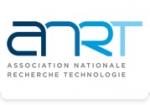 ANRT
ANRT 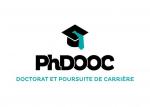 PhDOOC
PhDOOC  Aérocentre, Pôle d'excellence régional
Aérocentre, Pôle d'excellence régional  SUEZ
SUEZ  MabDesign
MabDesign  ONERA - The French Aerospace Lab
ONERA - The French Aerospace Lab 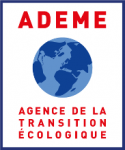 ADEME
ADEME  CESI
CESI  Ifremer
Ifremer  Tecknowmetrix
Tecknowmetrix  Laboratoire National de Métrologie et d'Essais - LNE
Laboratoire National de Métrologie et d'Essais - LNE  CASDEN
CASDEN  ASNR - Autorité de sûreté nucléaire et de radioprotection - Siège
ASNR - Autorité de sûreté nucléaire et de radioprotection - Siège  Institut Sup'biotech de Paris
Institut Sup'biotech de Paris  Nokia Bell Labs France
Nokia Bell Labs France  Groupe AFNOR - Association française de normalisation
Groupe AFNOR - Association française de normalisation  Généthon
Généthon 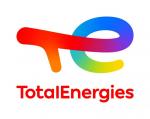 TotalEnergies
TotalEnergies

